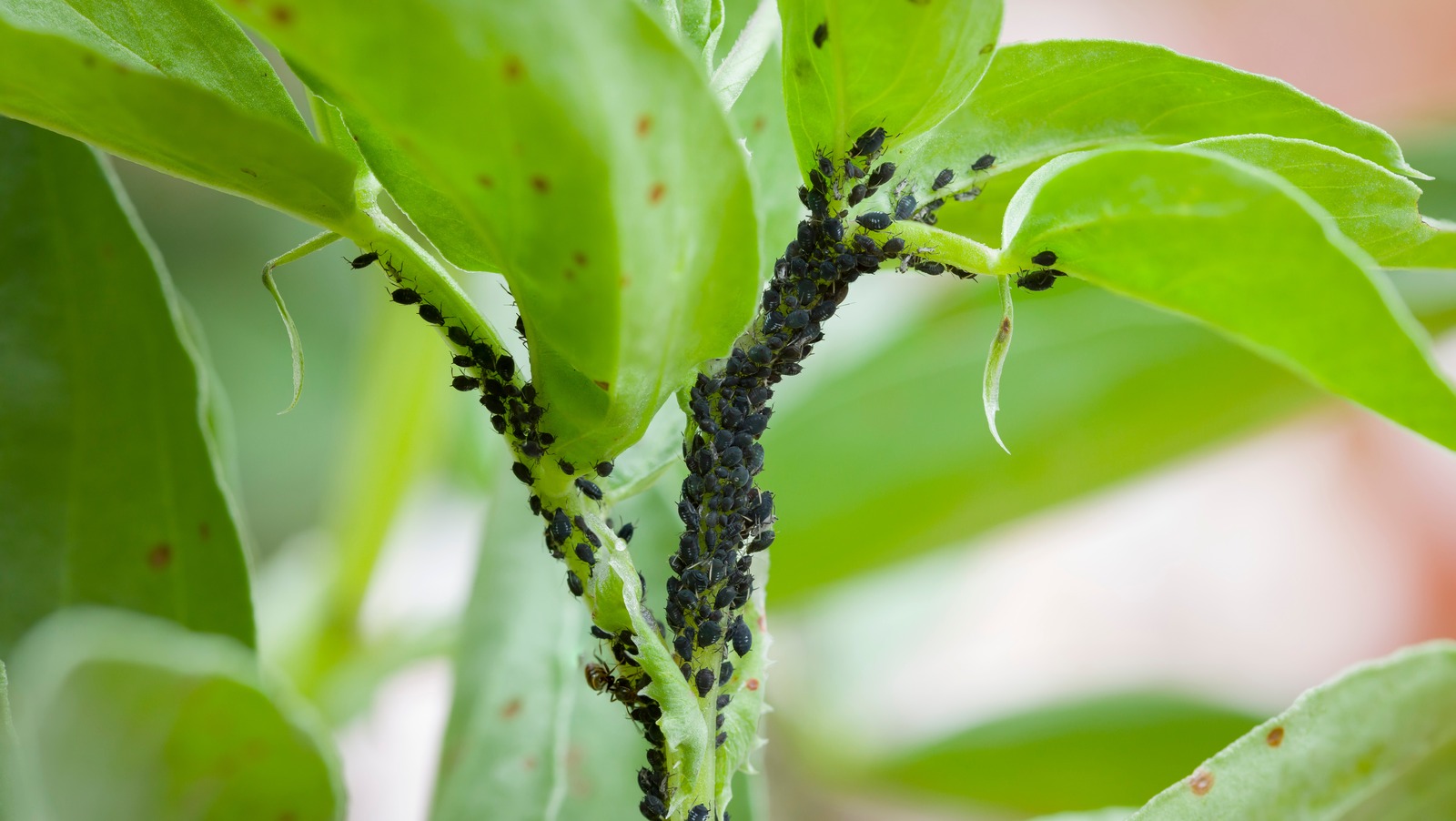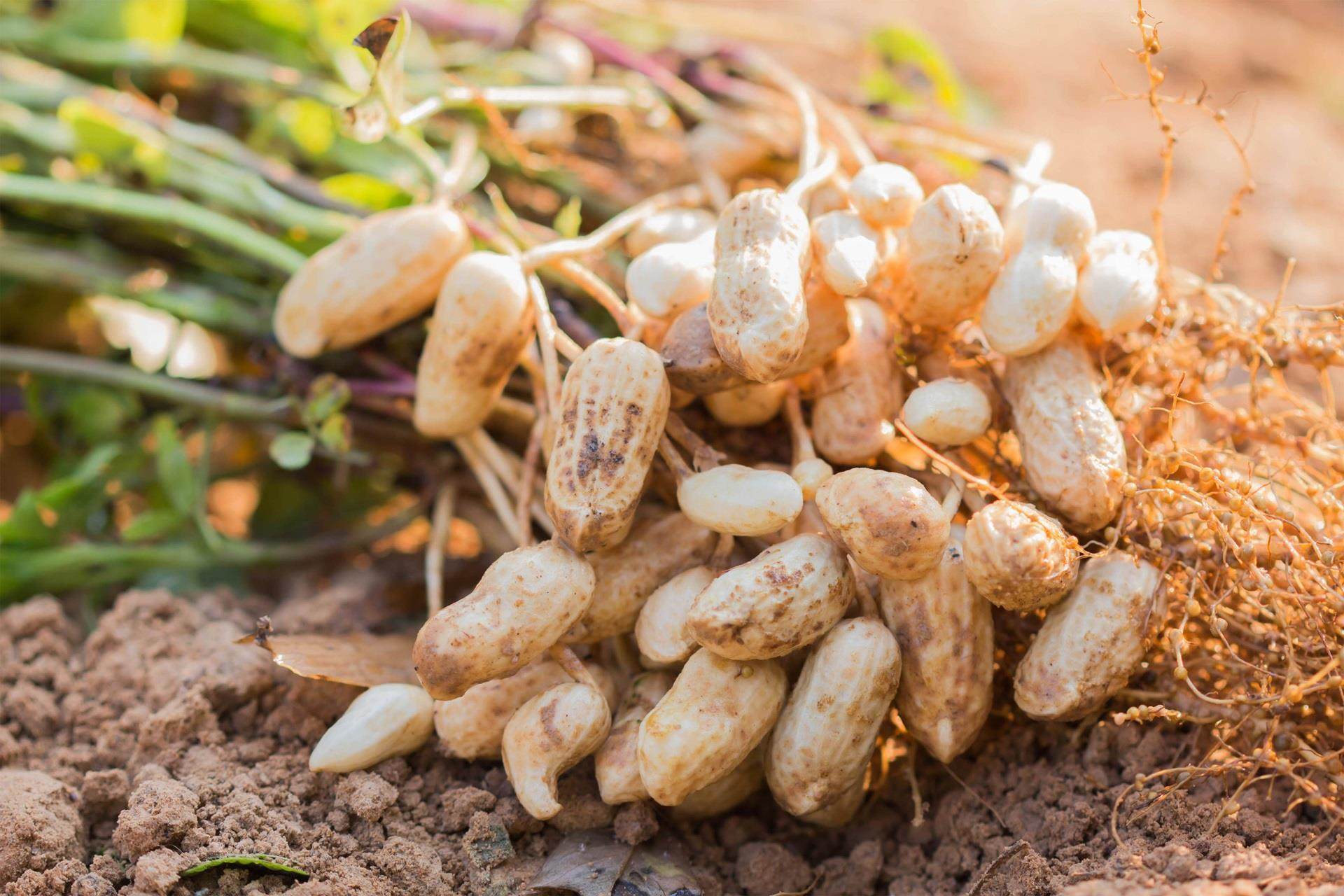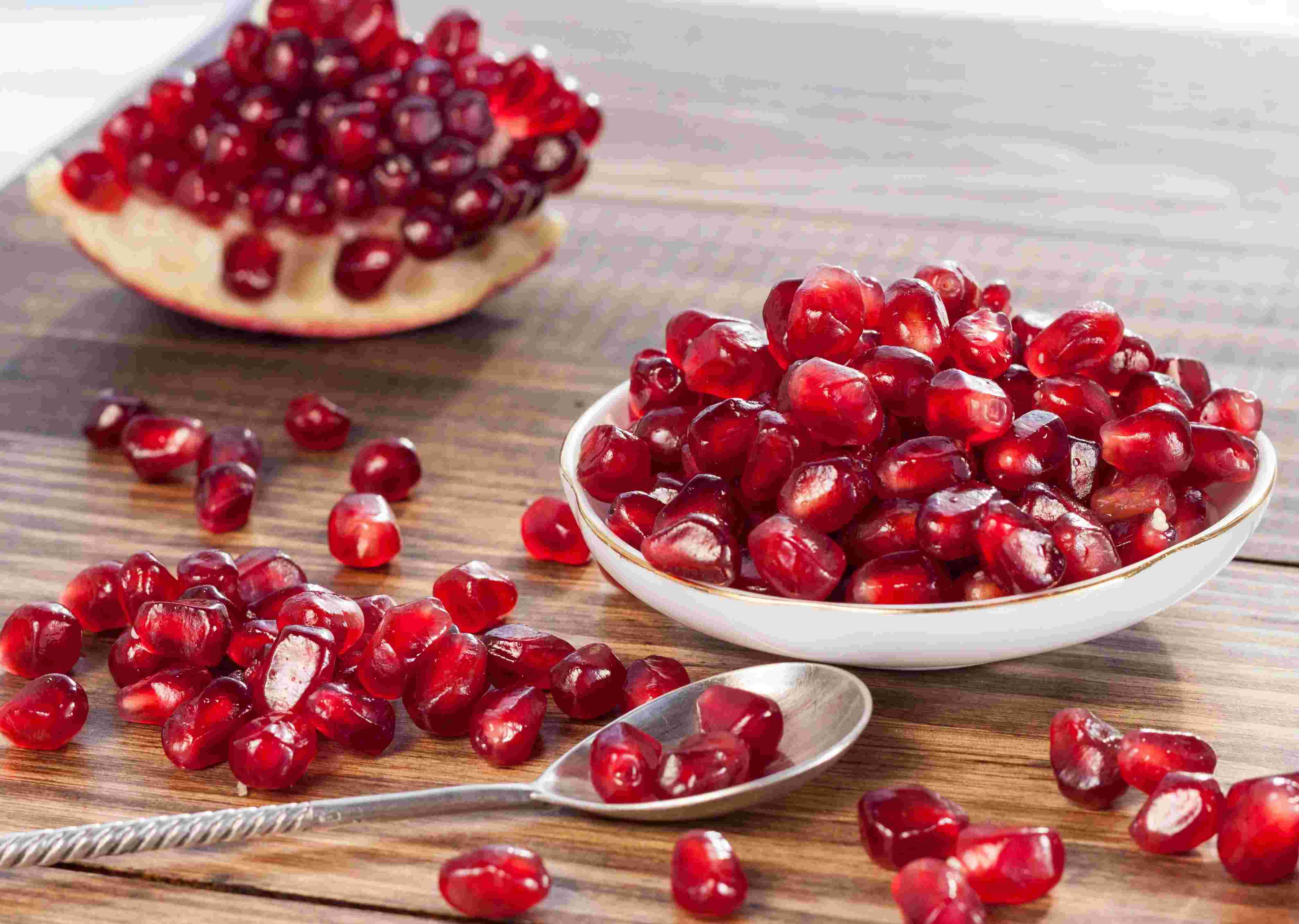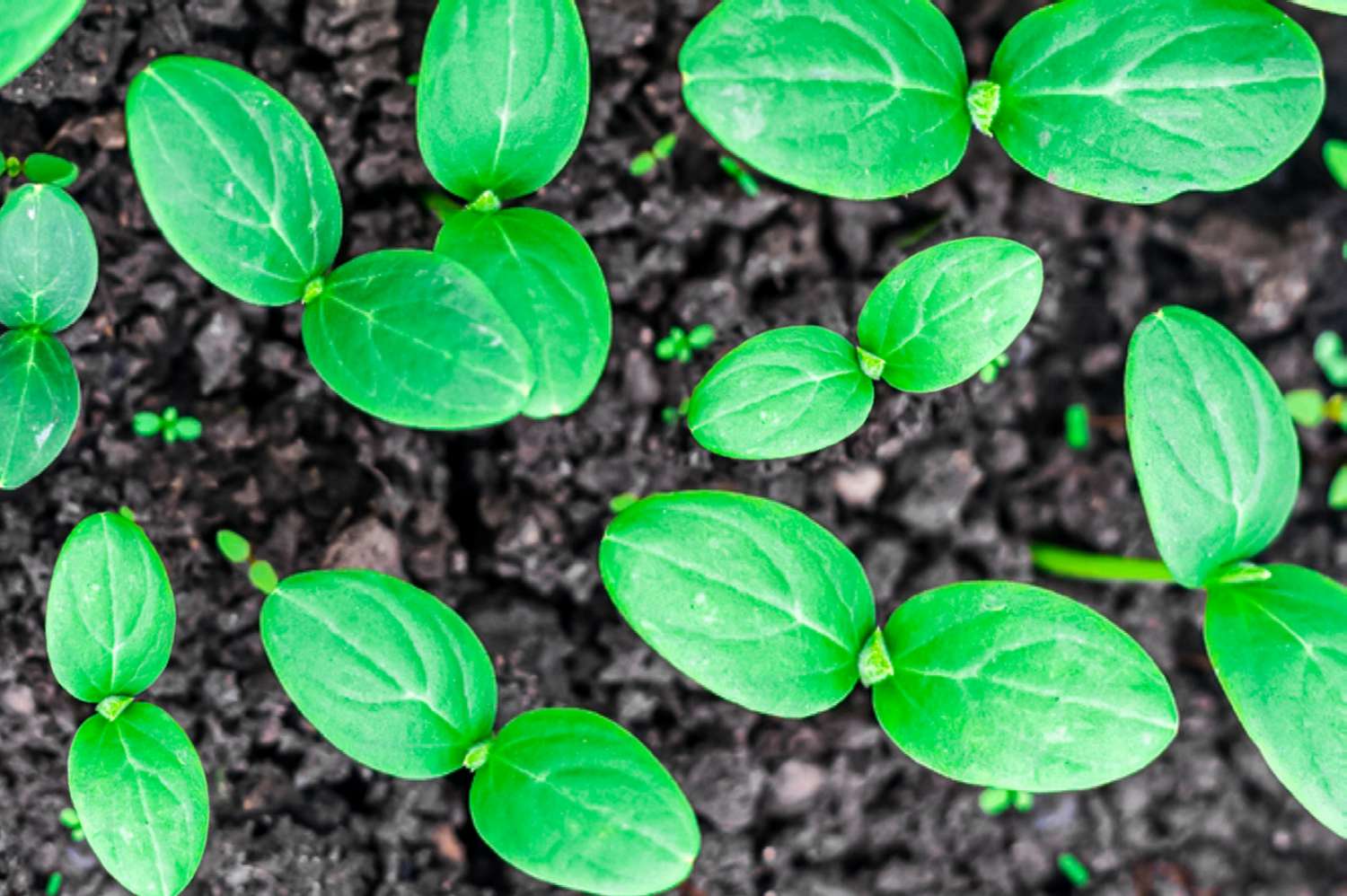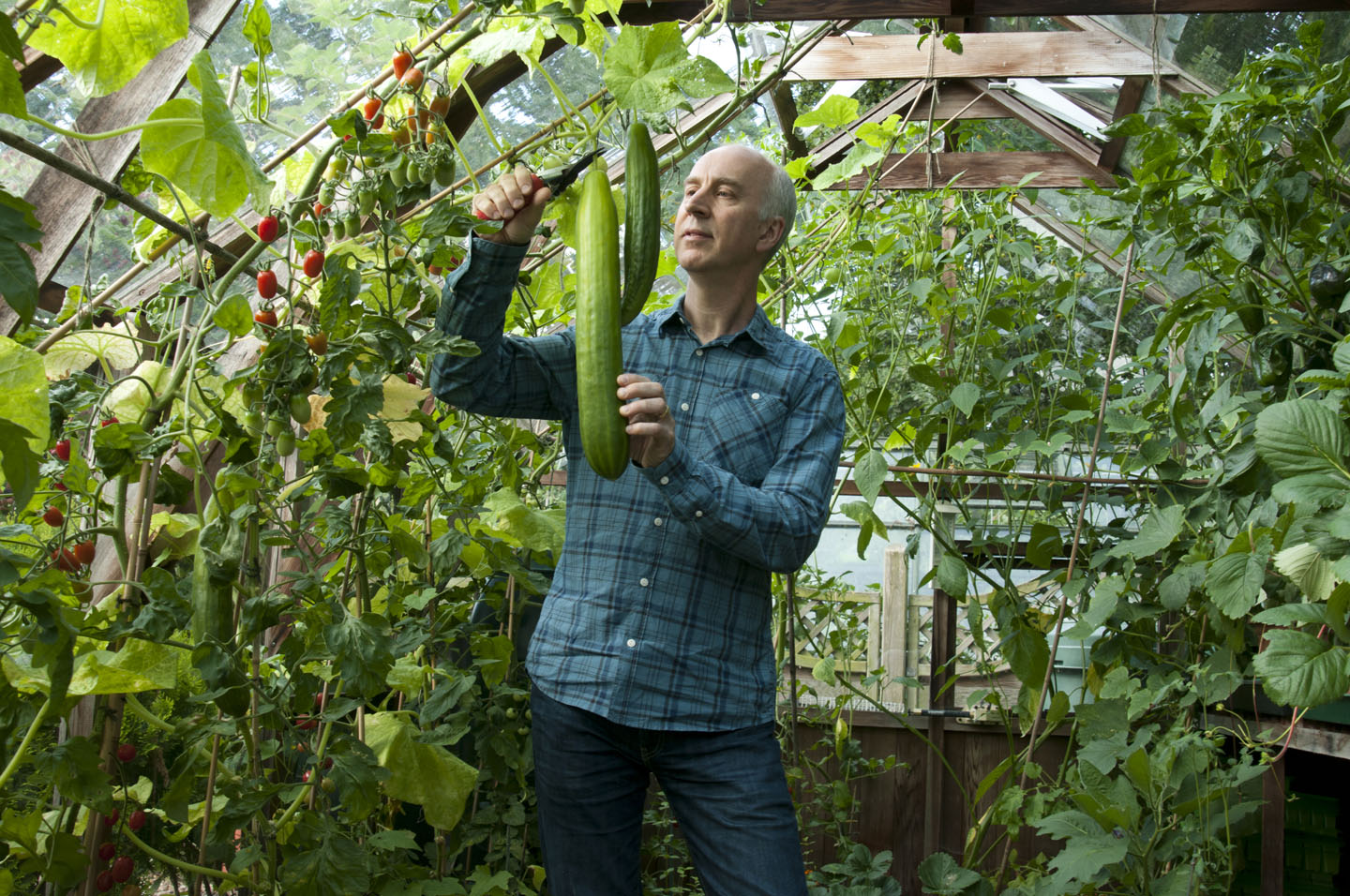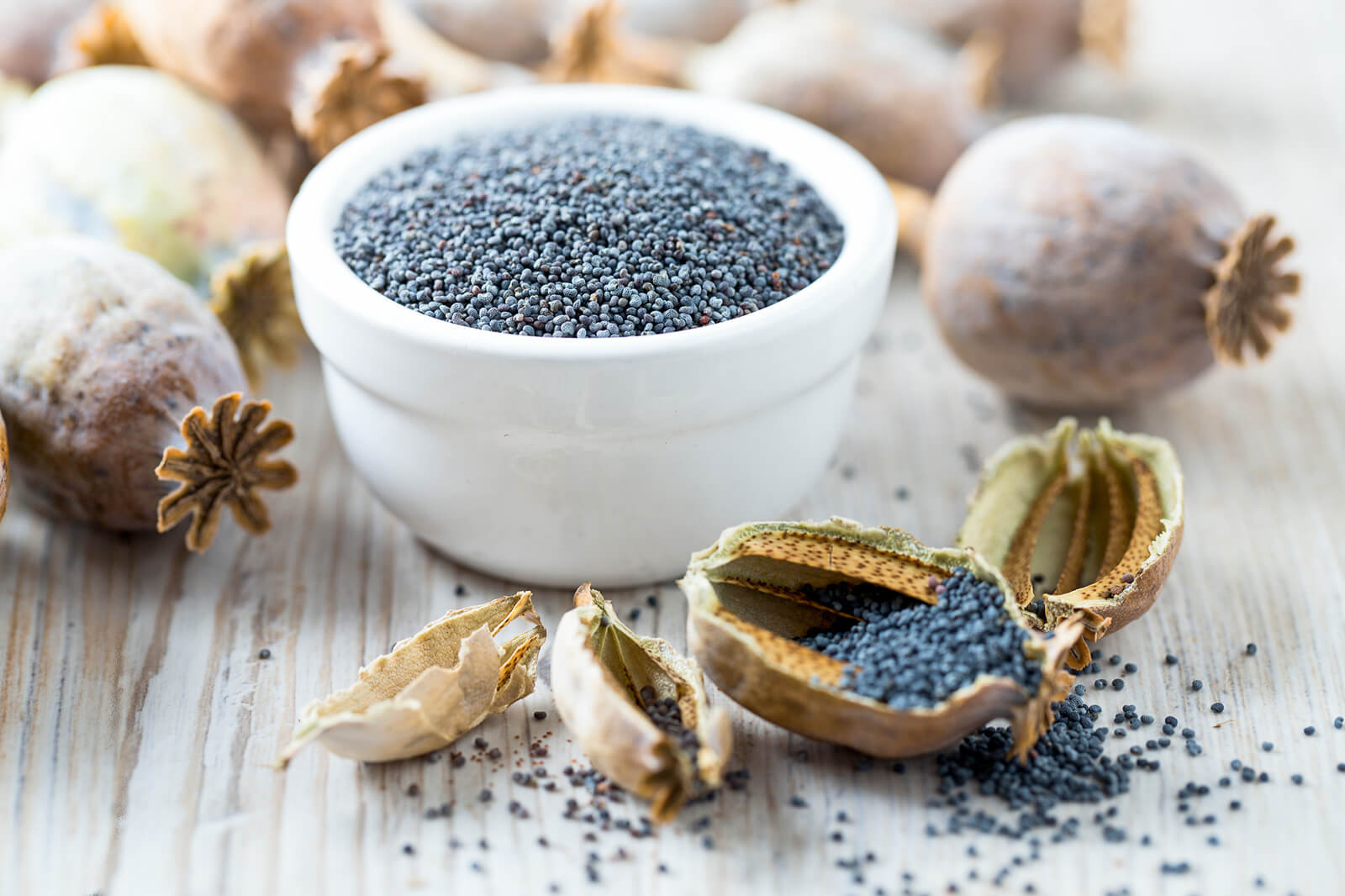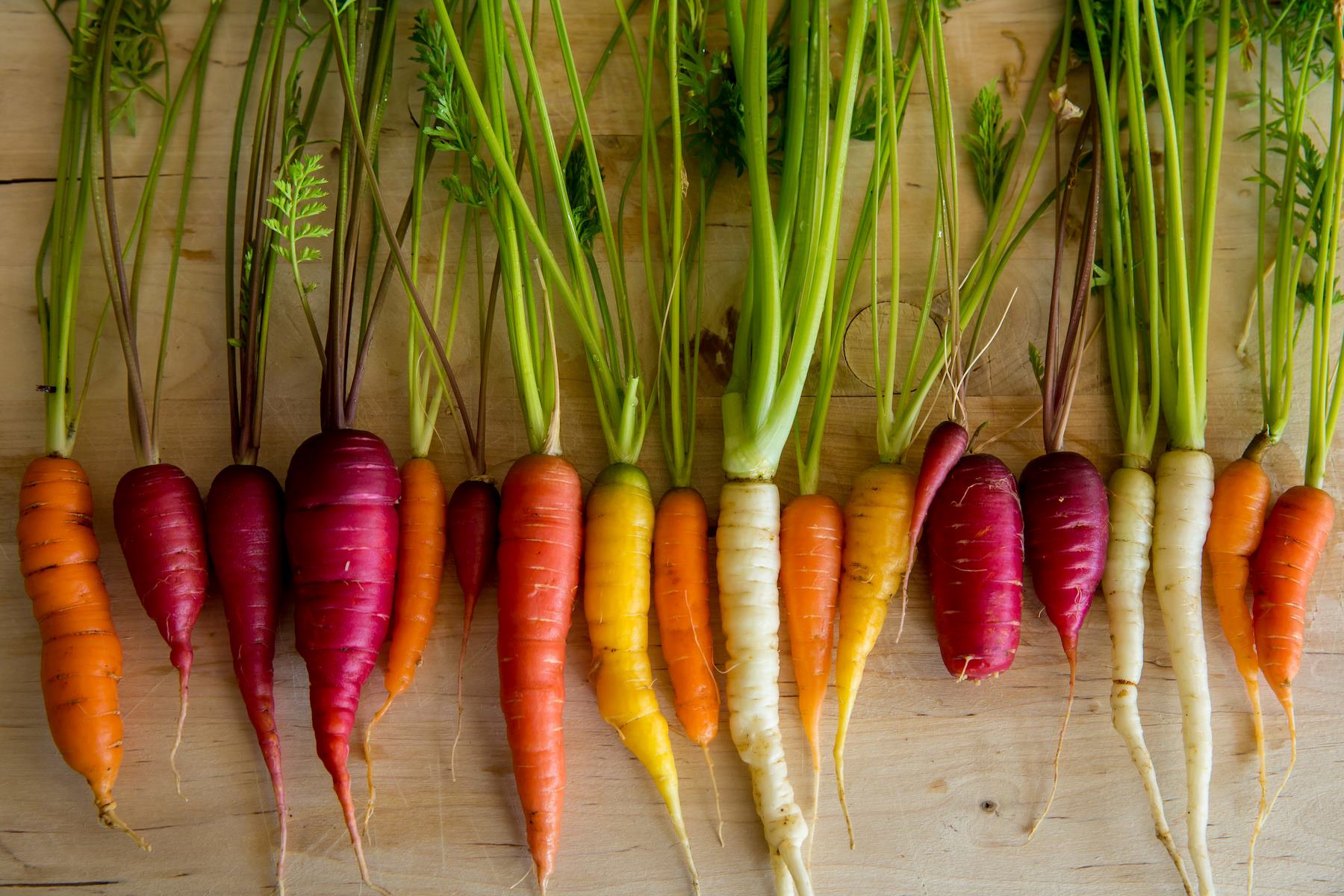Home>Types of Gardening>Edible Gardening>How To Get Seeds From Cucumber For Planting
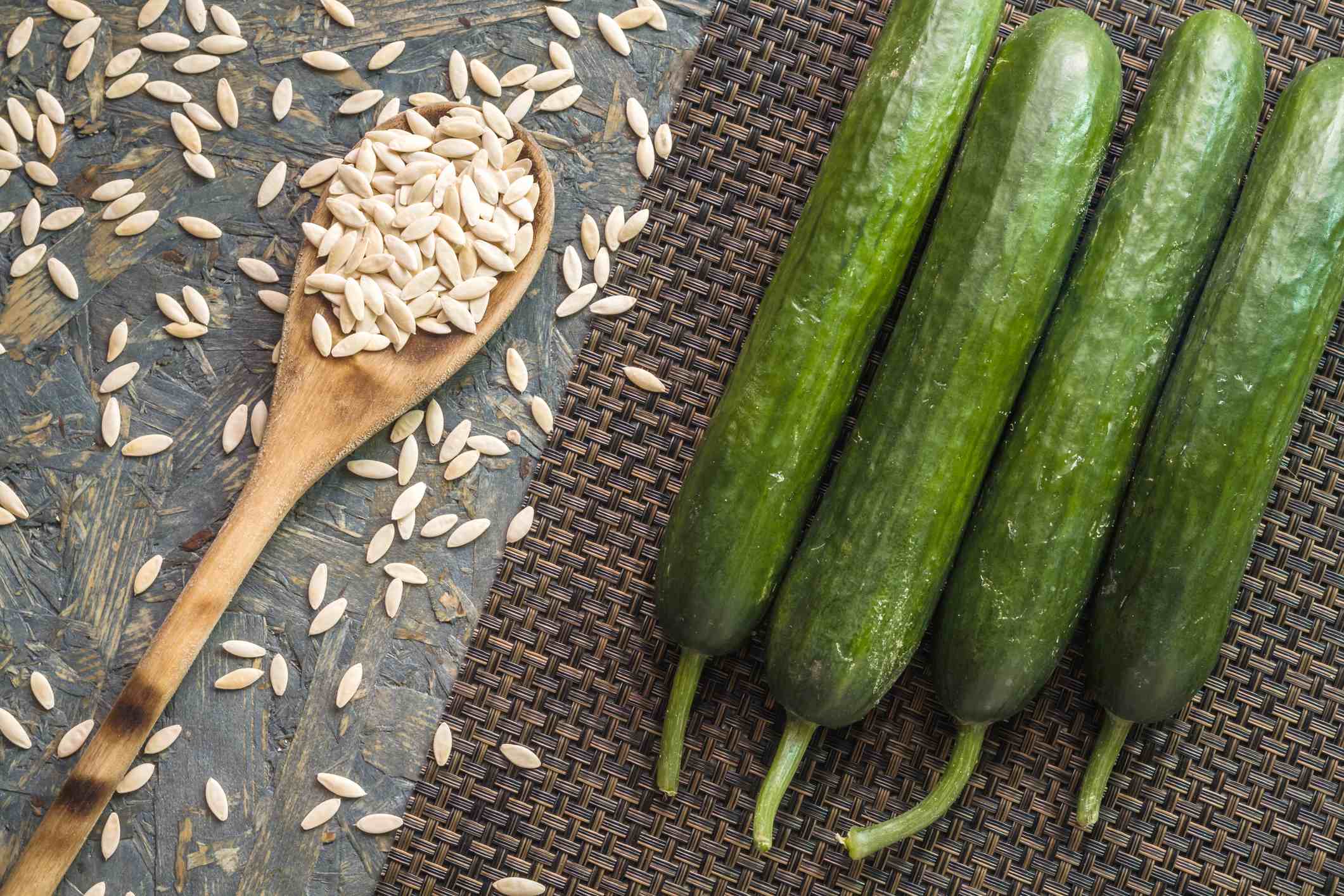

Edible Gardening
How To Get Seeds From Cucumber For Planting
Published: August 25, 2023
Learn how to harvest seeds from cucumbers for planting in your edible garden. Discover the secrets of successful edible gardening with our step-by-step guide.
(Many of the links in this article redirect to a specific reviewed product. Your purchase of these products through affiliate links helps to generate commission for Chicagolandgardening.com, at no extra cost. Learn more)
Table of Contents
- Introduction
- Benefits of Saving Seeds from Cucumber
- Selecting Cucumbers for Seed Saving
- Harvesting Ripe Cucumbers
- Preparing Cucumber Seeds for Planting
- Fermentation Process for Removing Gel Coating
- Drying Cucumber Seeds
- Proper Storage of Cucumber Seeds
- Tips for Successful Cucumber Seed Germination
- Conclusion
Introduction
Welcome to the world of edible gardening! If you have a passion for gardening and a love for fresh, homegrown produce, then you’re in the right place. Edible gardening allows you to grow your own fruits, vegetables, and herbs, providing you with a bountiful harvest right in your backyard. One of the most rewarding aspects of edible gardening is the ability to save seeds from your plants and use them to grow new crops in the future.
In this article, we will focus on the process of saving seeds from cucumbers. Cucumbers are a popular vegetable in many home gardens, prized for their crunchy texture and refreshing taste. By saving seeds from your own cucumber plants, you can ensure a continuous supply of delicious cucumbers year after year.
Not only does saving cucumber seeds allow you to maintain the quality and characteristics of the cucumbers you love, but it also promotes sustainability and self-sufficiency in your gardening endeavors. So, whether you’re a seasoned gardener or just starting out, learning how to save seeds from cucumbers is an essential skill that pays dividends in the long run.
In the following sections, we’ll explore the benefits of saving cucumber seeds, how to select the best cucumbers for seed saving, the harvesting process, and proper techniques for preparing and storing cucumber seeds. We’ll also share some tips for successful cucumber seed germination, so you can maximize your chances of growing thriving cucumber plants from the seeds you’ve saved.
So, let’s dive in and discover the fascinating world of saving cucumber seeds for planting!
Benefits of Saving Seeds from Cucumber
Saving seeds from your cucumber plants offers a multitude of benefits that go beyond simply growing more cucumbers. Here are several compelling reasons why you should consider saving cucumber seeds:
- Budget-friendly: By saving cucumber seeds, you can eliminate the need to purchase new seeds or seedlings every season. This not only saves you money but also gives you more control over your gardening expenses.
- Biodiversity preservation: Many commercial seed varieties are hybridized, which means they are bred to possess certain desirable traits. However, this can result in a loss of biodiversity. By saving seeds from heirloom or open-pollinated cucumber varieties, you contribute to the preservation of diverse genetic strains.
- Preserving unique traits: If you have a cucumber plant with exceptional taste, texture, or appearance, saving and replanting its seeds allows you to perpetuate those unique traits. Over time, you can develop a strain of cucumbers tailored to your specific preferences.
- Self-sufficiency and sustainability: Growing your own cucumbers from saved seeds promotes self-sufficiency by reducing your dependency on external seed sources. Additionally, it decreases the carbon footprint associated with shipping and packaging commercially produced seeds.
- Adaptation to local conditions: By saving cucumber seeds from plants that have successfully grown in your specific region, you help develop a strain that is better adapted to your local climate and growing conditions. This improves the chances of your cucumbers thriving year after year.
As you can see, saving cucumber seeds not only has practical benefits but also contributes to the larger goals of biodiversity conservation, self-sufficiency, and sustainable gardening practices. It allows you to play an active role in preserving and cultivating the diversity of cucumber varieties while enjoying the satisfaction of growing your own food.
Selecting Cucumbers for Seed Saving
When it comes to selecting cucumbers for seed saving, there are a few key factors to consider to ensure the best results. Here are some guidelines to help you choose the right cucumbers for seed saving:
- Heirloom or open-pollinated varieties: It’s important to select cucumber varieties that are heirloom or open-pollinated, as these plants produce seeds that will grow true to type. Avoid hybrid varieties, as their seeds may not produce plants with the same characteristics as the parent plant.
- Healthy and disease-free plants: Choose cucumber plants that are healthy, vigorous, and free from any signs of disease or pest infestation. Healthy plants are more likely to produce high-quality seeds that will yield robust and thriving cucumber plants.
- Mature fruit: Harvest cucumbers for seed saving when they are fully mature. Look for cucumbers that have reached their typical size and have developed a firm skin. Avoid using underripe or overripe cucumbers, as they may affect the quality of the seeds.
- Desirable traits: Select cucumbers with the traits you value most, such as size, shape, color, taste, and texture. By saving seeds from cucumbers that possess the qualities you prefer, you can gradually develop a strain of cucumbers that is well-suited to your personal preferences.
- Isolation distance: If you are growing multiple cucumber varieties, ensure that they are isolated from each other to prevent cross-pollination. Different cucumber varieties can cross-pollinate, resulting in seeds that yield cucumbers with mixed characteristics. Maintain a distance of at least ½ mile or use physical barriers such as nets or cages to prevent cross-pollination.
By carefully selecting cucumbers for seed saving based on the traits mentioned above, you can lay the foundation for a successful and thriving cucumber garden for years to come. Remember to pay attention to the health and quality of the plants and fruits you choose, as these factors greatly influence the quality of the seeds you will harvest.
Harvesting Ripe Cucumbers
Knowing when and how to harvest ripe cucumbers for seed saving is crucial to ensure the seeds inside are mature and viable. Here are some guidelines to help you harvest cucumbers at the right time:
- Observation: Regularly inspect your cucumber plants for mature fruits. Look for cucumbers that have reached their typical size and have a vibrant color. Different cucumber varieties may have different colors when ripe, so familiarize yourself with the specific characteristics of the varieties you are growing.
- Firmness: Gently squeeze the cucumbers to check for firmness. Ripe cucumbers should feel firm but not rock-hard. Avoid using cucumbers that feel soft or mushy, as they may have started to spoil or develop seeds that are no longer viable.
- Color: Pay attention to the color of the cucumbers. In general, ripe cucumbers will have a uniform, vibrant color. Avoid using cucumbers with yellow or overripe spots, as this may indicate that the seeds inside have begun to deteriorate.
- Size: Harvest cucumbers when they have reached their typical size. This will vary depending on the variety you are growing. Refer to the seed packet or plant tag for guidance on the expected size of the cucumbers.
When harvesting cucumbers for seed saving, it’s essential to handle them with care. Use a sharp knife or shears to cut the cucumber from the vine, ensuring a clean cut. Do not twist or pull the cucumber, as this can damage the plant and affect the quality of the seeds.
After harvesting the ripe cucumbers, promptly move on to the next step of preparing the seeds for planting. Remember, the quality of the cucumber seeds you save directly impacts the success of your future cucumber plants. So, be diligent in your harvesting process and choose only the best, mature cucumbers for seed saving.
Preparing Cucumber Seeds for Planting
Before you can plant cucumber seeds saved from your own cucumbers, it’s important to properly prepare them. This preparation process involves removing the gel coating surrounding the seeds, as well as drying them thoroughly. Follow these steps to prepare your cucumber seeds for successful planting:
- Extracting the seeds: Cut the harvested cucumbers lengthwise to expose the seeds. Use a spoon to scoop out the seeds and place them in a clean container, such as a glass jar or a bowl.
- Separating the seeds from the gel coating: Fill the container with water, covering the seeds. Gently stir the mixture and allow it to sit for 2-3 days. During this time, the gel coating around the seeds will ferment and separate from the seeds.
- Removing the gel coating: After the fermentation process, the viable seeds will sink to the bottom of the container, while the gel coating and other debris will float to the top. Pour off the floating debris, being careful not to lose any seeds. Rinse the seeds in a fine-mesh sieve under running water to further remove any remaining gel coating.
- Drying the seeds: Spread the cleaned cucumber seeds on a paper towel or a mesh screen in a well-ventilated area. Ensure that the seeds are arranged in a single layer and not touching each other. Allow the seeds to dry completely, which may take up to a week or two. Stir or turn the seeds daily to ensure even drying.
Once the cucumber seeds have dried thoroughly, they are ready for storage or immediate planting. It’s essential to ensure that the seeds are completely dry to prevent mold or rot during storage or germination. Additionally, make sure to label the seeds with the cucumber variety and the year of harvest for easy identification in the future.
By preparing your cucumber seeds in this meticulous manner, you can increase the chances of successful germination and ultimately grow healthy and productive cucumber plants. So take the time to properly prepare your cucumber seeds, and you’ll be rewarded with a bountiful harvest in the seasons to come.
Fermentation Process for Removing Gel Coating
The fermentation process is an essential step in preparing cucumber seeds for planting. It helps to remove the gel coating that surrounds the seeds, which can inhibit germination if left intact. Follow these steps to ferment your cucumber seeds and remove the gel coating:
- Collecting the seeds: Harvest fully mature cucumbers from your garden. Cut them open lengthwise to expose the seeds and scoop them out with a spoon. Place the seeds in a clean container.
- Add water to the seeds: Fill the container with water, ensuring that there is enough water to cover the seeds completely. Use a ratio of approximately 1 part seeds to 3 parts water.
- Mix and let sit: Stir the cucumber seeds and water mixture gently. Allow it to sit undisturbed for 2-3 days at room temperature. During this time, the mixture will undergo fermentation, causing the gel coating to break down.
- Skim off the debris: After the fermentation process, the viable cucumber seeds will sink to the bottom of the container, while the gel coating and other debris will float to the top. Carefully pour off the debris and any floating seeds using a fine-mesh sieve.
- Rinse the seeds: Place the cucumber seeds that sank to the bottom of the container into a sieve or colander. Rinse them thoroughly under running water to remove any remaining gel coating or debris. Gently shake the sieve to ensure all excess water is drained.
- Drying the seeds: Spread the rinsed cucumber seeds on a paper towel or a mesh screen in a well-ventilated area. Make sure the seeds are arranged in a single layer and not touching each other. Allow them to dry completely, which may take about a week or two. Remember to stir or turn the seeds daily for even drying.
This fermentation process effectively breaks down the gel coating, making it easier to separate the viable cucumber seeds. It also helps to prevent possible diseases from affecting the seeds during storage or germination.
By following these steps to ferment and remove the gel coating from your cucumber seeds, you can greatly improve their chances of successful germination and ensure a healthy start for your cucumber plants.
Drying Cucumber Seeds
Properly drying cucumber seeds after the fermentation process is crucial to ensure their longevity and viability. Drying the seeds thoroughly helps to prevent mold, rot, and other issues that can affect germination. Follow these steps to dry your cucumber seeds effectively:
- Prepare the seeds: After rinsing the fermented cucumber seeds, spread them out on a paper towel or a mesh screen. Ensure that the seeds are arranged in a single layer and not touching each other. Discard any seeds that appear shriveled, discolored, or damaged.
- Choose a drying location: Find a well-ventilated area that is dry and cool. Ideally, the temperature should be around 70°F (21°C) with low humidity. Avoid areas with direct sunlight, as excessive heat can damage the seeds.
- Avoid moisture: Keep the drying area free from moisture or humidity. Moisture can lead to mold growth, which can ruin the seeds. Ensure there is good airflow to help speed up the drying process.
- Rotate and stir: It’s crucial to rotate or stir the cucumber seeds daily to ensure even drying. This helps to prevent clumping and ensures that all sides of the seeds are exposed to the airflow.
- Check for dryness: Over the next week or two, periodically check the seeds for dryness. When the seeds are completely dry, they will feel hard and break instead of bending. There should be no residual moisture or softness.
- Storage readiness: Once the cucumber seeds are dry, they are ready for storage. Place them in a clean, airtight container, such as a glass jar or a seed envelope. Ensure the container is labeled with the cucumber variety and the year of harvest for easy identification.
Properly dried cucumber seeds can be stored for several years if kept in a cool, dry, and dark location. Regularly check the stored seeds for any signs of moisture or mold and discard any that show abnormalities.
By following these steps to dry your cucumber seeds thoroughly, you can increase their chances of successful germination and enjoy a bountiful harvest of healthy cucumber plants in the future.
Proper Storage of Cucumber Seeds
Proper storage of cucumber seeds is crucial to maintain their viability and ensure successful germination when you’re ready to plant them. Follow these guidelines to store your cucumber seeds effectively:
- Ensure dryness: Make sure your cucumber seeds are completely dry before storing them. Any residual moisture can lead to mold or rot, which can ruin the seeds. You can perform a moisture test by placing a small number of seeds in an airtight container with a desiccant packet. If condensation forms, the seeds are still too moist and need further drying.
- Choose the right container: Use a clean, airtight container for seed storage. Glass jars with tight-fitting lids or seed envelopes are good options. Make sure the container is labeled with the cucumber variety and the year of harvest for easy identification.
- Control temperature and humidity: Cucumber seeds should be stored in a cool, dry, and dark place. Ideally, the storage temperature should range between 32°F to 41°F (0°C to 5°C). Avoid storing them in areas prone to temperature fluctuations or high humidity levels, as this can reduce seed viability.
- Avoid exposure to light: Cucumber seeds should be protected from exposure to light, as it can affect germination rates. Store seeds in opaque containers or keep them in a dark area to maintain seed quality.
- Check for pests: Before storing the cucumber seeds, inspect them carefully for any signs of pests or damage. Discard any seeds that show signs of insect infestation or damage to prevent the spread of pests to other seeds.
- Regularly test viability: Over time, the viability of cucumber seeds may decrease. To ensure the seeds are still viable, conduct germination tests by planting a small sample and observing seedling emergence. If a significant number of seeds fail to germinate, it may be time to refresh your seed stock.
By storing your cucumber seeds properly, you can preserve their viability and increase the likelihood of successful germination when you decide to plant them. It’s important to maintain the optimal storage conditions to ensure the longevity and quality of the seeds.
With the right storage techniques, you can enjoy a steady supply of healthy cucumber seeds for years to come, allowing you to continue growing delicious and nutritious cucumbers in your garden.
Tips for Successful Cucumber Seed Germination
Germination is a critical stage in the life cycle of a cucumber plant. To ensure successful and healthy germination of your cucumber seeds, consider the following tips:
- Planting depth: Cucumber seeds should be planted at a depth of about 1 inch (2.5 cm) in loose, well-draining soil. Planting too deep may hinder their ability to emerge, while planting too shallow can expose them to drying out.
- Soil temperature: Cucumbers prefer warm soil for germination. Aim for a soil temperature of around 70°F to 90°F (21°C to 32°C). Using a soil thermometer can help you determine when the soil is within the ideal range.
- Moisture: Cucumber seeds require consistent moisture to germinate. Keep the soil evenly moist, but avoid overwatering, as excessive moisture can lead to rot or damping off. Use a gentle mist or fine spray when watering to prevent displacing the seeds.
- Protect from frost: Cucumbers are sensitive to cold temperatures, so wait until all risk of frost has passed before planting the seeds outdoors. Alternatively, you can start them indoors in containers before transplanting them to the garden.
- Provide support: Certain cucumber varieties, such as vining or climbing types, benefit from support structures like trellises or cages. Providing support helps keep the plants upright, promotes air circulation, and makes harvesting easier.
- Thinning: If multiple seeds germinate in close proximity, thin them out to allow proper spacing for healthy growth. Crowded plants compete for resources and can be more susceptible to diseases and reduced yields.
- Monitor for pests and diseases: Regularly inspect your cucumber seedlings for signs of pests or diseases, such as cucumber beetles or powdery mildew. Promptly take appropriate measures to mitigate any issues to ensure the health and vigor of your plants.
- Provide adequate sunlight: Cucumbers thrive in full sun conditions, so ensure they receive a minimum of 6 to 8 hours of direct sunlight per day. Insufficient sunlight can result in weak plants and poor fruit development.
By following these tips, you can increase the chances of successful cucumber seed germination and establish a strong foundation for healthy cucumber plants. Remember to provide an optimal growing environment and monitor your plants regularly to address any potential issues promptly.
With patience and care, you’ll soon enjoy the satisfaction of harvesting fresh, homegrown cucumbers from the seeds you’ve germinated successfully.
Conclusion
Congratulations! You are now equipped with the knowledge and understanding of saving cucumber seeds for planting. Edible gardening allows you to enjoy the satisfaction of growing your own food, and by saving cucumber seeds, you can ensure a continuous supply of delicious cucumbers year after year.
Through the process of selecting the right cucumbers, harvesting ripe fruits, and properly preparing and drying the seeds, you can maximize the chances of germination and grow healthy cucumber plants. The fermentation process for removing the gel coating and the careful storage of cucumber seeds are crucial steps to maintain seed viability and longevity.
Remember to follow the tips for successful cucumber seed germination, such as planting at the right depth, providing adequate moisture and sunlight, and monitoring for pests and diseases. By implementing these best practices, you can foster healthy growth and increase your chances of a bountiful cucumber harvest.
Not only does saving cucumber seeds promote self-sufficiency and sustainability in your gardening endeavors, but it also allows you to preserve unique traits, maintain biodiversity, and develop strains tailored to your preferences. The art of seed saving connects you to the rich heritage of gardening, passed down through generations.
So, whether you are a seasoned gardener or just starting out, the journey of saving seeds from cucumbers opens up a world of possibilities and rewards. Embrace the process, experiment with different varieties, and enjoy the taste of homegrown cucumbers.
Happy gardening and may your cucumber seeds blossom into vibrant, fruitful plants!
